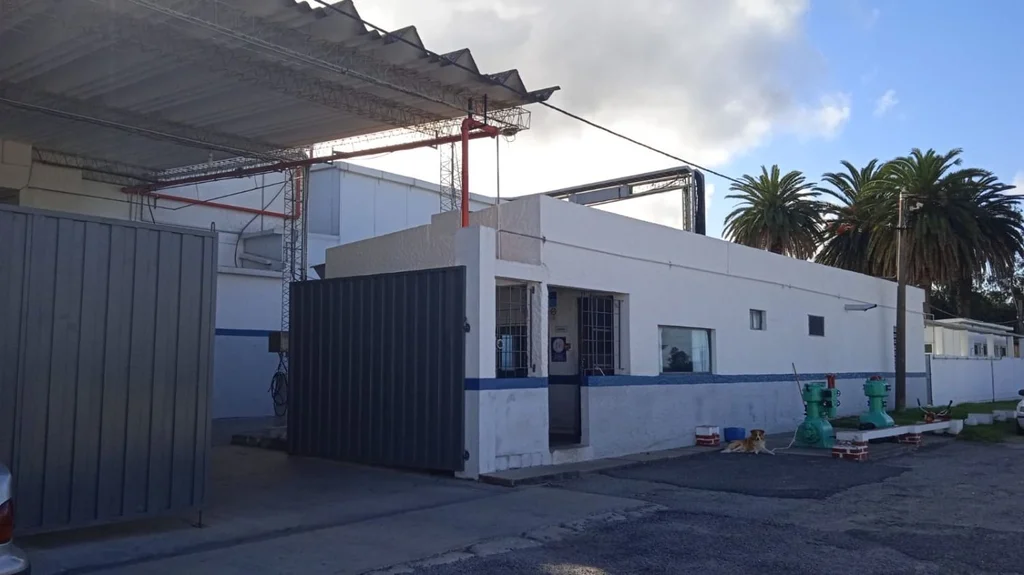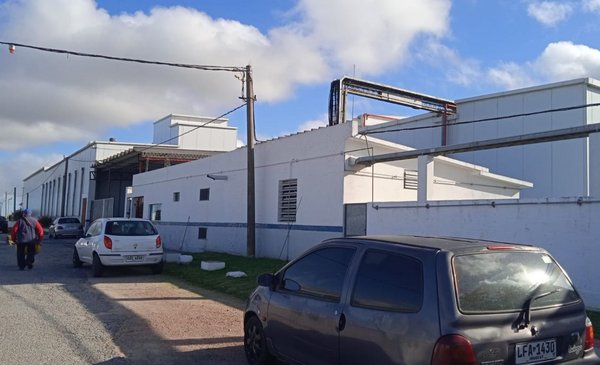The vast majority of the 370 workers of the Rosario Slaughterhouse continue with their income partially affected and eagerly waiting for the industrial activity to be rehabilitated in that refrigeratorwhat it depends on the health authorities of China, a market to which almost all the production was exported, lifting a sanction that they imposed more than seven months ago after an error in a shipment (see below).
This situation, the delay in the rehabilitation of the activity and the damage to the workers of the refrigerator located in that town of Colonia, led the Workers’ Federation of the Meat and Allied Industry (Foica) to decide this Tuesday a 24-hour strike for Friday, May 6, accompanying this measure with a concentration of workers in Plaza Independenciain Montevideo.
Javier Martínez, president of the Union of Employees of the Slaughterhouse Rosario (Semar), commented to The Observer what he and the rest of the union leadership are “optimistic” that there is a solution, even in the short termHowever they understand the strike and the mobilization to be reasonable: “Here and around the world everyone knows well what the activity of the refrigerator means for a city like Rosario, what impacts people, but the strike and the mobilization will help us make many other people realize it”, commented.
In addition, he pointed out, “we hope that the Presidency of the Republic will receive us that day, to listen to us and help us; it is clear that there was a mistake, there was already a sanction, but the time that has passed seems to us more than enough due to the error that occurred and it is time for all of us colleagues to go back to work“.
What are the 370 workers up to?
Martinez explained that about 20 employees are still working on site so keep everything in proper shape so that, as soon as possible, all the activities in an industrial complex that had the destination of 90% of its meat production in the Asian giant be developed again.
This includes porter work, administration, cleaning, maintenance, machine rooms and those related to cold chambers, where merchandise was left ready for export without being dispatched.
Semar
The old Rosario Slaughterhouse.
What happened
On September 29, 2021, China suspended the entry of products manufactured and exported by Frigorífico Rosario (Rondatel SA) after non-permitted fat trimmings were found in one of the containers shipped with Uruguayan meat. At a press conference, at that time, the Minister of Livestock, Agriculture and Fisheries (MGAP), Fernando Mattos, explained that there was “a discrepancy between a product and its documentation.” In a routine review, the sanitary and customs services in China found 4,000 kilos of bovine fat trimmings that were not authorized for export. Mattos said it was “an isolated episode” and that “three or four boxes” were involved.

Semar
About 20 people work to keep the facilities in proper condition.
Of the rest of the workers, about 350, the vast majority remain on unemployment insurance since October 1, given that the extension has been approved every three months. “Until now there have been no problems with that,” Martinez acknowledged.
There have been cases of workers who have managed to get by with what they receive from unemployment insurance.
Others resigned, “because they had no choice,” said Martínez, and are already working in other places. Several, managing not to leave the area in which they are suitable, found work in another meatpacking plant located about 30 km away (Establecimiento Colonia, owned by the Brazilian company Marfrig).
There were also cases of workers who have added some occasional income doing odd jobseither cutting grass or firewood, running errands or doing some agricultural work on farms in the areafor example in sowing or harvesting tasks.
The vast majority, pointed out Martínez, are looking forward to returning to what they understand to be their work environment, at the Matadero Rosario.
Sanatorium, refrigerator and quartermaster
In Rosario, the main source of employment is the Camec sanatorium, followed by the now suspended refrigerator and then comes public employment, basically jobs dependent on the Colonia Municipality.
While they wait to get their jobs back, Several dozen workers from the Rosario Slaughterhouse, at the moment two full buses of people, will arrive in Montevideo this Friday to expose their situation in the capital.
“The strike is done for us, it is so that what is happening to us is known, we have the obligation to be there,” Martínez concluded.


















